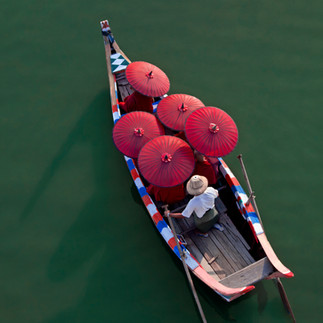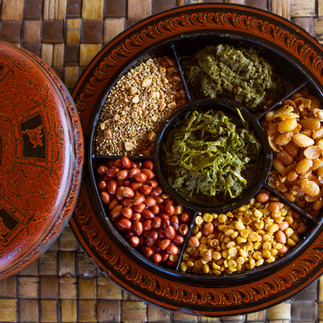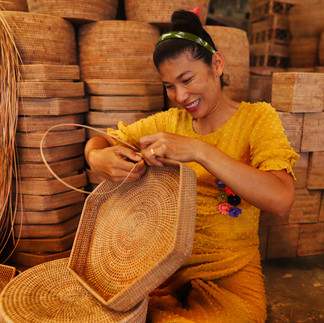Unlocking Myanmar’s Rattan Tapestry: A Comprehensive Exploration
- thethtar
- Nov 27, 2023
- 2 min read
Nestled amid the lush landscapes of Southeast Asia, Myanmar stands as a bastion of biodiversity, and at the heart of this ecological richness lies a botanical treasure – the diverse and resilient rattan species.
1. Calamus Guruba: The Stalwart Artisan
Calamus Guruba, a native rattan variety in Myanmar, boasts robust and thick stems, making it an ideal choice for crafting durable and intricately designed furniture. Its strength lends itself to a myriad of applications, from sturdy chairs and tables to intricate woven patterns, showcasing the versatility that Myanmar's rattan offers.
2. Calamus flagellum: The Graceful Weaver
In contrast, Calamus flagellum takes center stage for its slender and flexible stems. This variety is celebrated for its graceful weaving capabilities, allowing artisans to craft intricate patterns with ease. The resulting furniture is not only lightweight but also surprisingly durable, offering a perfect blend of elegance and resilience.
3. Sustainable Harvesting Practices: A Balancing Act
Myanmar's approach to rattan harvesting emphasizes sustainability. Artisans employ traditional methods, selectively harvesting mature rattan stems while allowing younger ones to flourish. This meticulous balance ensures the continued regeneration of rattan resources, contributing to the preservation of Myanmar's diverse ecosystems.
4. Cultural Narratives in Rattan Weaving
The art of rattan weaving in Myanmar transcends mere craftsmanship; it is a cultural expression. Each woven pattern carries symbolic significance, reflecting local myths, traditions, and the daily lives of communities. This cultural depth adds a layer of appreciation for the stories embedded in every rattan creation.
5. Rattan's Versatility and Durability
Rattan, known for its flexibility, is an excellent material for creating furniture that seamlessly blends aesthetics with functionality. Its natural durability makes it resistant to wear and tear, ensuring that rattan furniture stands the test of time. This inherent resilience makes rattan an ideal choice for both indoor and outdoor settings.
6. Myanmar Rattan: What Sets It Apart
Myanmar's rattan is distinguished by its unique combination of strength, flexibility, and intricate weaving capabilities. The local varieties, such as Calamus Guruba and Calamus flagellum, contribute to the distinctive characteristics of Myanmar rattan furniture. These species tend to be more densed and therefore feel heavier than rattan sourced from elsewhere. The craftsmanship reflects a perfect marriage of tradition and innovation, setting it apart from the competition.
7. Rattan Exporters in Myanmar: Nurturing Global Interest
Myanmar boasts a growing community of rattan exporters, fostering global interest in the unique qualities of Myanmar's rattan. The craftsmanship and attention to sustainability showcased by these exporters play a pivotal role in introducing the world to the unparalleled beauty and durability of Myanmar's rattan creations.
8. Future Prospects: Rattan as a Pillar of Sustainability
Myanmar's diverse rattan species, celebrated for their cultural significance and unmatched quality, present promising prospects for sustainability. As a rapidly renewable resource, rattan emerges as a key player in eco-friendly practices and responsible material sourcing, offering a vision for a greener and more sustainable future.
This comprehensive exploration invites you to immerse yourself in the intricate world of Myanmar's rattan – a tale woven with resilience, culture, and a commitment to preserving the natural heritage.

.png)















Comments